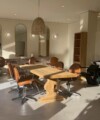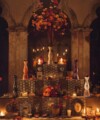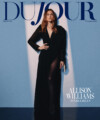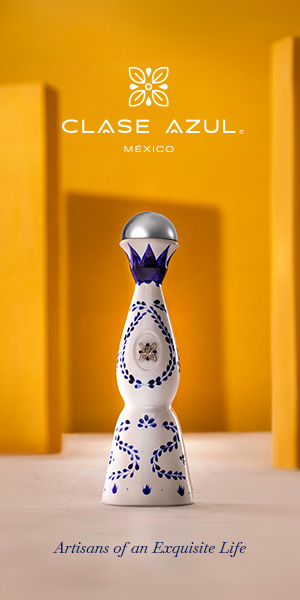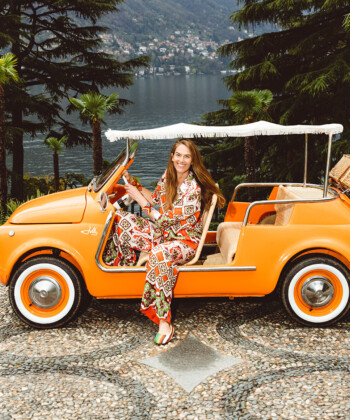The holidays are the perfect time to impress your guests with an over-the-top floral centerpiece that’ll add dimension and natural beauty to your tablescape. To learn the intricacies of flower arranging, DuJour is looking to the experts at Jack & Rose Florist. The Long Island-based floral design studio has curated incredible arrangements for all types of occasions—weddings, bridal showers, corporate affairs and more—across the tri-state area. Below, owner Jack Rutigliano tackles everything from incorporating textures (think: moss, foliage and colorful leaves) to picking the right flowers for the season. And best of all, there’s no green thumb necessary.
Let the time of year dictate your flower selection.
Mother Nature is the keeper of the best possible color palette for flowers, which sometimes means that ideal flower you had in mind won’t be available. A year-round staple is always roses and orchids. For the warmer months, we love using dahlias, hydrangeas and peonies, though they have a much shorter lifespan. Sunflowers are always a crowd favorite in early autumn, when you can also start to introduce branches and twigs to really play up the time of year. Spring is really fun for flowers because Dutch tulips, poppies and cherry blossoms come to bloom.
Don’t be afraid of mixing up textures.
There’s nothing like an interesting mix of textures to make an arrangement really pop. We love using berries, moss, architectural foliage and different colored leaves to shake things up.
Play with different heights when designing a large room.
When working with a grand space with really tall ceilings and lots of guests, there’s always a tricky balance to designing the room the right way. One technique is to mix up different sizes and heights of arrangements. This variety adds a layer of dimension and also breaks up any potential uniformity.
Design for your event.
Flowers really set the tone for your event so it’s important to understand the vibe you’re going for before you dive in. Long-stem calla lilies are great for a more traditional type of affair, whereas small tasteful accents of freesia or ranunculus evoke a more modern and fresh feeling.
Commit to your vision.
When you have something in mind, stick with it! Just make sure you don’t try to mix-and-match. Here are some specific pointers based on various design styles:
TRADITIONAL: This is a timeless consideration of color and style. A neutral palette that’s modest in every regard.
RUSTIC: Keep to earthy ingredients and use nature to its fullest—lumber, branches, twigs, leaves, weedy concepts such as vines, wild fillers, wicker, etc. Complement your piece with tins, antiques, vintage glass and candles to complete the look and take it up a notch.
MODERN: Go for a more avant-garde style. Bring in LED lights for the room, square and rectangular vases, feathers and different textures. You are looking for bold, clean and sharp lines.
GLAM: Don’t be afraid of going full-force high drama. Try some crystal chandeliers, draping and elevated centerpieces.
VINTAGE: Stick with a muted color palette. Bring in heirlooms, antiques, lace, tarnished metal and books.
HARVEST: Blend nature with produce by incorporating the foods of the season. We love using artichokes, kumquats, apples, pears, grapes and more.
Decorate the table beyond the flowers.
Just as accessories complete the outfit, so holds true for centerpieces as well. Complement your flower arrangements with different candles, rose petals and even petals floating in small glasses of water. These tiny details will really complete the look. If you’re a collector of any kind, don’t be afraid to add in personal touches to bring in your personality. We love incorporating hidden vintage finds whenever we can. As a bonus, they make for great conversation starters!
Main image by Alex Silverman




